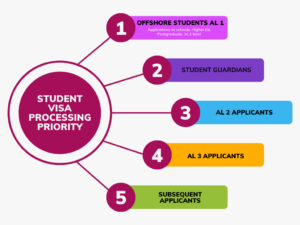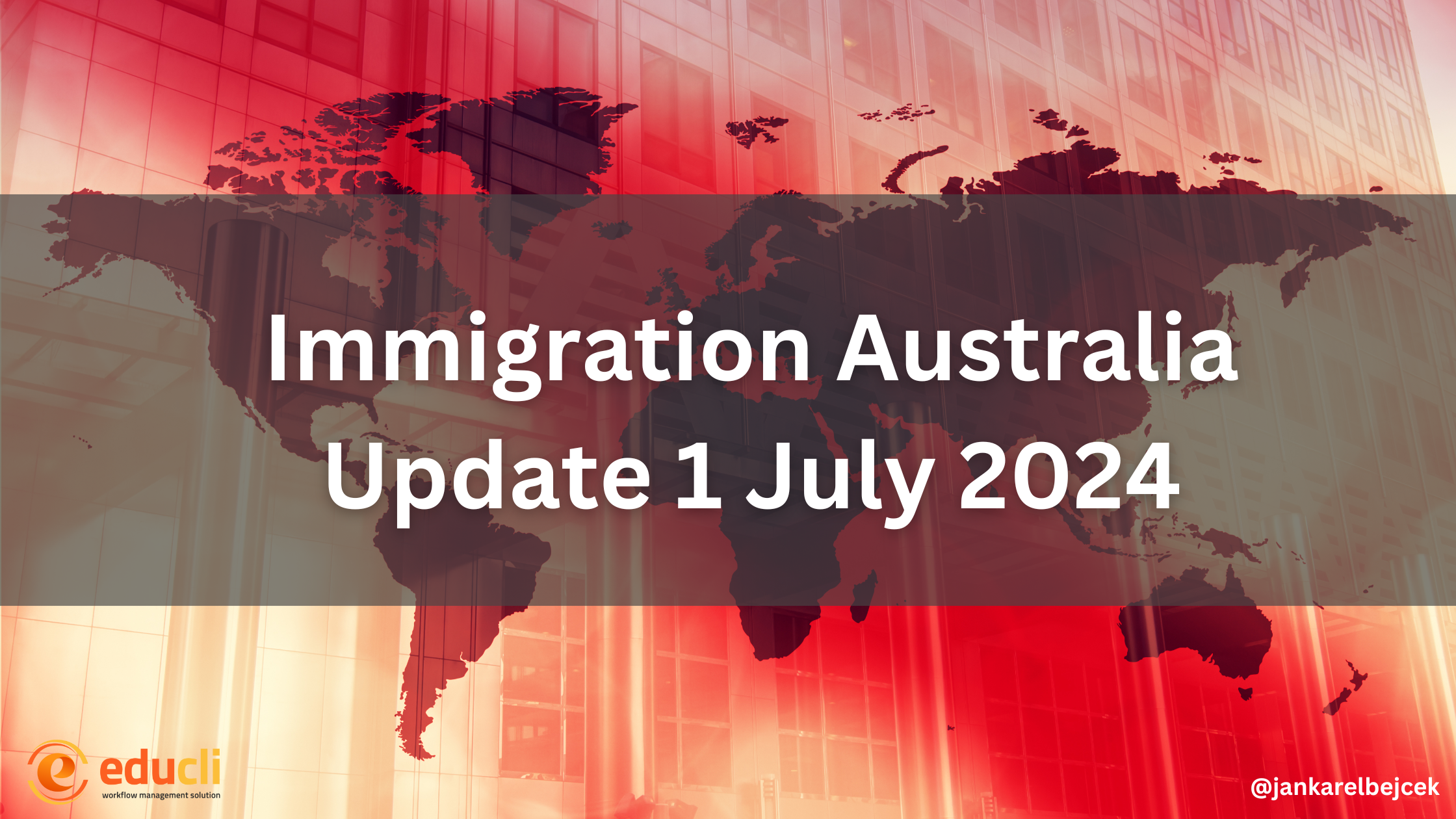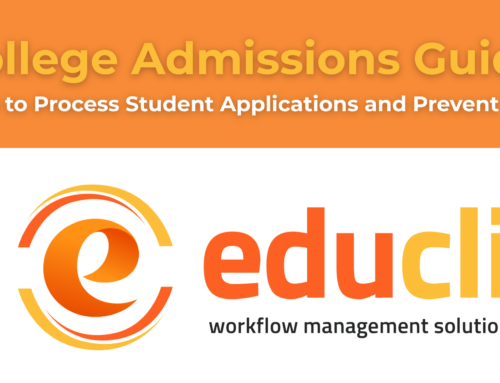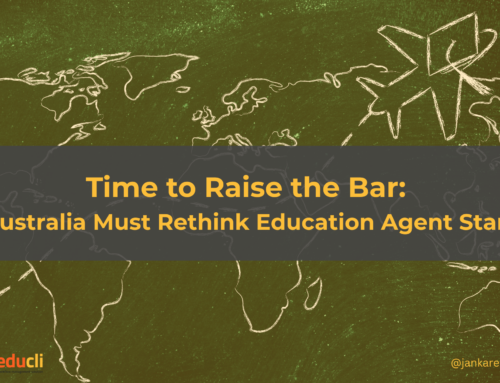New student visa fees, visa processing priorities and timeframes
The government has announced, without any prior notice or industry consultation, a steep hike in student visa fees from 1 July 2024 to a staggering AUD$1,600.
As per Minister’s statement: “This increase reflects the increasing value of education in Australia and reflects the Albanese Government’s commitment to restoring integrity in the international education sector.” In addition to the quoted passages from the various ministers’ speeches, there are some more populist remarks that do not constitute a rational plan.
Furter to the fees increase, the Minister emphasised the order under which the student visa applications are being processed.
These applications will be processed in the following order, as described below:
- Offshore Student visa applications when the primary applicant:
- is a school student, Foreign Affairs student or Defence student;
- intends to undertake a full-time course of study under a secondary school student exchange program;
- intends to undertake a higher education course or a full-time registered course of study or training at an AL1 rated institution;
- intends to undertake a postgraduate research course.
- Student Guardian visa applications.
- Offshore Student visa applications of applicants intend to undertake a higher education course or a full-time registered course of study or training at an AL2 rated institution.
- Offshore Student visa applications of applicants intend to undertake a higher education course or a full-time registered course of study or training at an AL3 rated institution.
- Offshore Student visa applications made by subsequent entrants.

Please note that:
- Any secondary applicant (spouse, de-facto partner or dependent child) who is included in the primary visa application will be given the same priority as the primary applicant;
- Subsequent applicant means a secondary applicant (partner or children) for a student visa who did not make a combined application with the primary applicant / primary visa holder;
- Offshore Sc 500 applicants undertaking two or more course of study will be given priority over applicants intending to only undertake one course;
- Where the primary applicant intends to undertake two or more courses of study (course packaging), the application will be given the order of priority that applies to the principal course of study (i.e. the course of study with the highest Australian Qualifications Framework (AQF) level).
- Student visa applications lodged in Australia should continue to be processed according to existing processing arrangements.
Understanding the Genuine Temporary Entrant (GTE) Requirement
To be granted a student visa, applicants must demonstrate that they are genuine students whose primary purpose for coming to Australia is to study. The GS requirement focuses on students who, after completing their studies, develop skills needed by Australia and may apply for permanent residence.
Key Criteria for GS Assessment
Applicants must provide detailed information on the following aspects:
- Current Circumstances
- Ties to family, community, employment, and economic circumstances
- Reason for Choosing the Course and Education Provider
- Explanation of why the applicant chose the specific course and provider.
- Understanding of course requirements and living conditions in Australia.
- Benefits of Completing the Course
- How the course will benefit the applicant in their home country or future career.
- Additional Relevant Information
- Any other information that supports the applicant’s intention to study in Australia.
Providing Evidence
Applicants must attach supporting documents to their ImmiAccount. Generic statements without evidence will not be given significant weight. It is crucial to provide evidence for claims made in the application.
English language requirement changes
The English language testing requirements for student visa English language requirements will increase:
- Temporary Graduate visa will increase from IELTS (or equivalent) 6.0 to 6.5
- Student visa will increase from IELTS (or equivalent) 5.5 to 6.0
- ELICOS will increase from IELTS (or equivalent) 4.5 to 5.0
- University foundation or pathway programs that deliver English language training will be an IELTS (or equivalent) 5.5
Changes to the Subclass 485 Visa from 1 July 2024
The age requirement for a 485 visa is reduced to 35 years old, unless exemption applies.
The Graduate Work stream has been renamed to the Post-Vocational Education Work stream.
The Post-Study Work stream has been renamed to the Post-Higher Education Work stream.
The qualification you use to meet the Australian study requirement determines the stream you can apply for. Other qualifications you hold won’t be considered in determining if you are eligible.
- If you hold an associate degree, diploma or trade qualification, you should apply for the Post-Vocational Education Work stream.
- The qualification you use must be closely related to your nominated occupation on the Medium and Long-term Strategic Skills List (MLTSSL).
- If your qualification is degree level or higher, you should apply for the Post-Higher Education Work stream.
Note: Restrictions that were in place for applicants whose first Student visa was granted because of an application made on or before 5 November 2011 no longer apply.
Restricting onshore visa hopping to the Student visa program
Effective from 1 July 2024, Australia implemented a significant policy change to extension of visa in Australia, where certain visa holders will be unable to apply for a Student visa while in Australia. In addition to existing visas from which it is already not possible to apply for a Student visa onshore, the complete list of visa holders that will be unable to apply for a Student visa onshore are:
- Subclass 485 (Temporary Graduate)
- Subclass 600 (Visitor)
- Subclass 601 (Electronic Travel Authority)
- Subclass 602 (Medical Treatment)
- Subclass 651 (eVisitor)
- Subclass 771 (Transit)
- Subclass 988 (Maritime Crew)
- Subclass 995 (Diplomatic Temporary) – primary visa holders only
- Subclass 403 (Temporary Work) International Relations)) – Domestic Worker (Diplomatic or Consular) stream
- Subclass 426 (Domestic Worker (Temporary) – Diplomatic or Consular)
Visa Grant Decline in 2024
The latest data release from the Australian government reveals a significant drop in study visa grants to offshore applicants. A total of 74,421 study visas were granted from January through April 2024, marking a nearly 30% decline from the 104,808 granted in the same period in 2023.
To put this into perspective, the decline for the first four months of this year compares to a 53% drop in visas granted to offshore students between 2019/20 and 2020/21 during the height of the pandemic.
Approval Rates Drop
Data from the Department of Home Affairs shows that overall approval rates for offshore applicants from January-April 2024 fell to 77.4%, compared to 80.5% the previous year. Historically, the approval rate for offshore applicants has never dipped below 80% except for these first four months of 2024. The average approval rate over the past 18 years was just under 90%.
Approval rates for the ELICOS and VET sectors dropped to 74.8% and 37.8%, respectively. A recent analysis from English Australia highlights the significant impact, noting that “ELICOS-only grant rate has fallen to record lows.” For instance, Colombian ELICOS-only grants for offshore applications were 32% for the first two months of 2024, compared to 95% in 2023 and a 10-year average of 86%.
Related links:
Guide to Genuine Student Requirement for Australian Student Visas
International education is entering a new phase
International education in Australia – Update June 2024
#internationaleducation #studyabroad #Australia #educli #studentvisa #studyinaustralia #tourismaustralia #tgv #graduatevisa





Leave A Comment